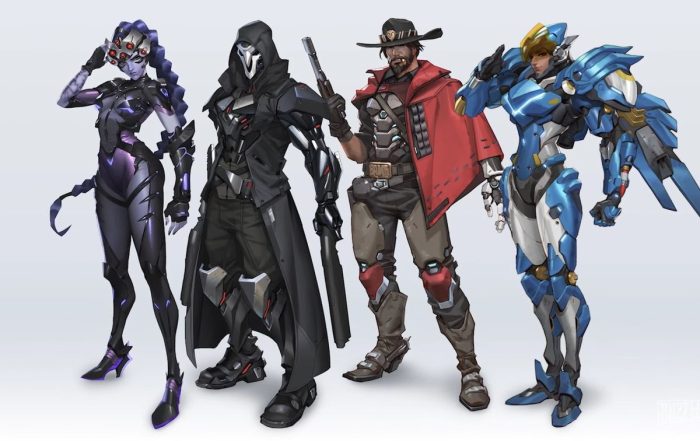
Metagaming – Using The Most Effective Tactics Available
Meta is an acronym for “most effective tactics available,” and calling something “meta” means that it’s an effective way to achieve the goal of the game, whether it’s to beat other players or beat the game itself.
There’s a good chance you’ve heard of the term “meta” in gaming if you’re a big fan of competitive esports or if you watch gaming personalities online. Over time metagaming has changed the gaming industry, both in terms of how games are made and how people play and interact with new games.
Upping your Metagame
In the metagaming, players use their real-world knowledge to get an edge in the game.
This could involve learning and testing the best strategies or finding out about the latest game updates, glitches, and bugs that can give them a competitive, and sometimes unfair, edge.
When did the phrase “meta-gaming” first come into use?
The origin of the idea of metagames originally came from the game theory field, with ideas first published in the groundbreaking Theory of Games and Economic Behavior by John von Neumann and Oskar Morgenstern in 1944, though the term itself was not originally used in that work.
The term gained more recent use towards game design by Richard Garfield, the creator of Magic: The Gathering in a column he wrote for The Duelist in 1995. In a 2000 talk at the Game Developers Conference, Garfield expanded on this, defining “metagame” as “how a game interfaces beyond itself”, and asserted that this can include “what you bring to a game, what you take away from a game, what happens between games, [and] what happens during a game”.
 How Meta is Shown in Video Games Today
How Meta is Shown in Video Games Today
Meta is a word used in gaming to talk about the latest strategies and trends among people who play a certain game.
Metagaming happens a lot in games with cards or collectibles, as well as in team-based multiplayer games where different battlegrounds and arenas have their own metagames.
Most of the time, the game designers themselves have an effect on these metagames. This is because some cards, arenas, or battlegrounds may get better over time thanks to changes made by the game’s publishers.
These include things like new attributes for cards or characters in the game, as well as new items and weapons for the most recent MMO games.
Meta in RPGs
Most of the time, when people talk about meta in modern role-playing games (RPG games), they mean how a player uses the expected parts of a game.
A player would be metagaming if they used a character in a game to do things in the game that the player knows how to do, but the character can’t.
Meta-gaming is when a player figures out the long-term plan of the overall gamemaster and then changes what they do in the game to help their character perform better.
Fighting games are another type of game that have meta. One good example is the screen where the player chooses which fighters to play with and which to fight against.
They might take the time to look at the strengths and weaknesses of each possible opponent before choosing a fighter who can easily counter their strengths and take advantage of their weaknesses.
To stop this from happening, some competitive esports fighting games have added blind selections to make the outcome of fighter picks even more random. This makes game mechanics less meta and puts more focus on player skill.
Is meta in games always okay or planned by the creators?
In the end, it depends on the situation in which metagaming is used. Metagaming is the top level of performance in very competitive video games like esports, where pros use the newest strategies and tools to compete.
But there is a fine line here, and some people don’t like how metagaming is interpreted. Stream sniping is one of the most important ways to mess with meta. This means watching a gamer’s live stream to find out information you can use against them when competing in-game.
A player could watch their opponent’s Twitch stream live and learn more about their positions and moves in the game. Because of this, sneaky and smart gamers who stream snipe in competitive gaming environments can get banned from some games.
On the other end of the spectrum, bugs can sometimes show up in games without the player’s knowledge.
Bugs are a normal part of making video games. But there are times when gamers find bugs before the developers do, so they can use certain glitches to their advantage. Most bugs and glitches are found by accident.
Most of the time, gamers don’t go out on a limb and try to change the code of a game and push it to its limits. Some gamers do train themselves to think like video game developers and look for exploits to add to their metagame.
In the middle of this range of gaming meta is the fact that there are a lot of ways to use game mechanics to get an advantage in-game.
In some racing games, for example, you can use speed boosts, and this is where gamers often use the term “snaking.” By drifting back and forth, these mini-turbo boosts can be done almost nonstop around circuits.
In adventure games, players have been using a trick called “kiting” for a long time. This is when players move the AI enemies into the best places for the player to attack.
Is it fair to play effectively?
But the market for video games is getting more and more crowded. With more games to choose from than ever before, it’s clear that game developers need effective and fair meta to make their games stand out.
There is a feeling that legitimate meta in gaming will help you get more out of your paid games, as well as your free-to-play games.
With more ways to play and get involved, it’s no surprise that gamers care more about their favorite games than they used to.



Get Social